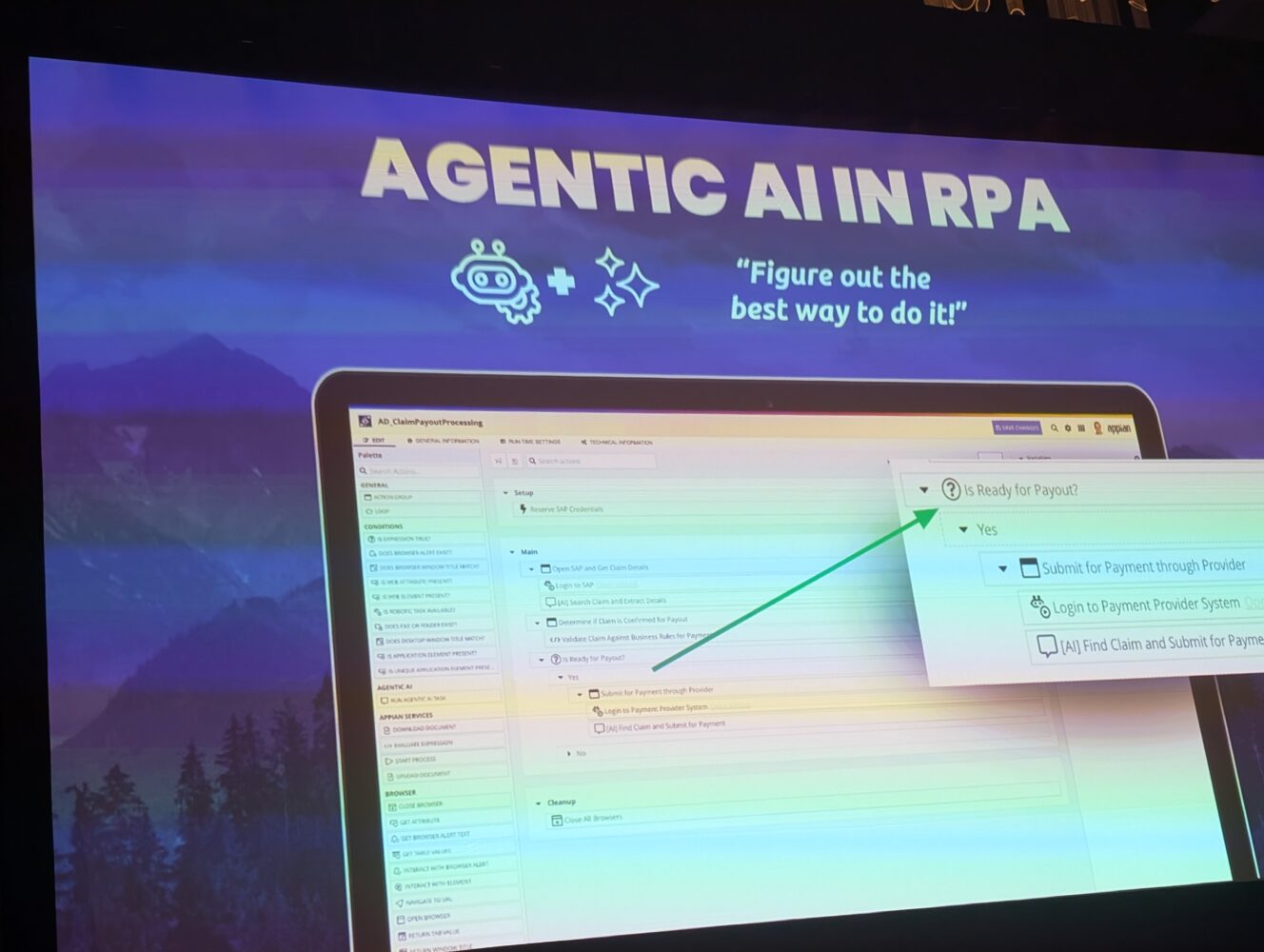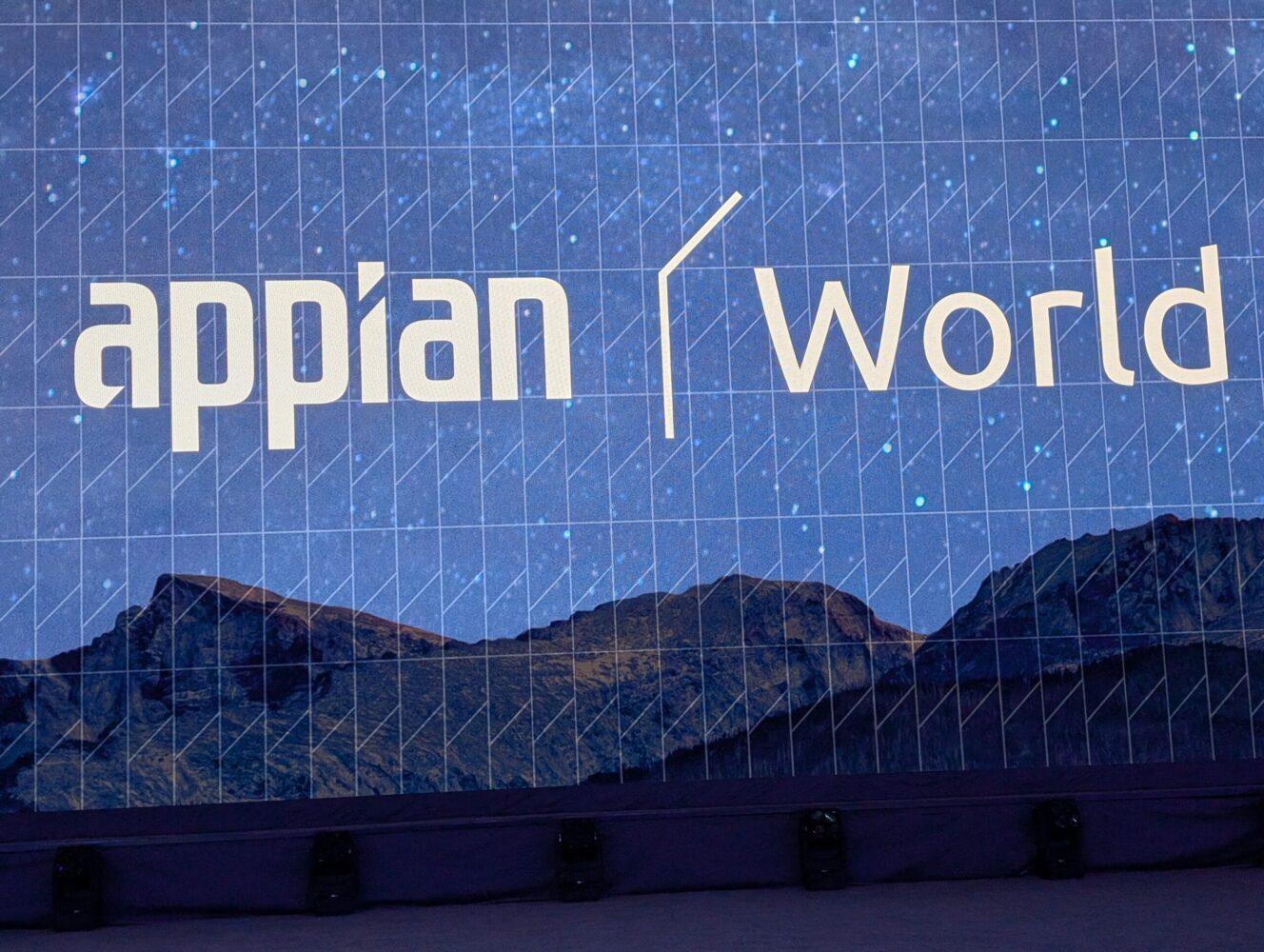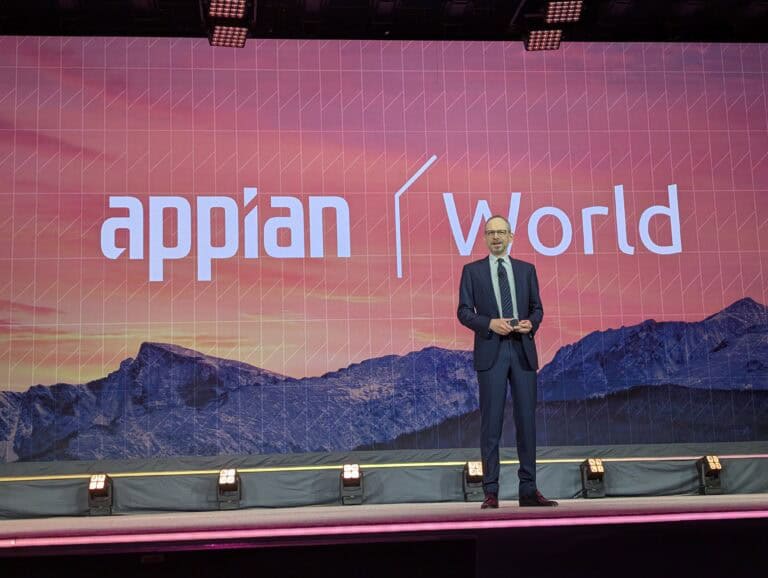Appian World in Denver focuses primarily on new opportunities for developers. The idea is that developers are ultimately the key to bringing AI to processes. If they set everything up correctly, process automation will continue to meet market expectations.
Shortly before the start of Appian World, Gregg Aldana, Head of Global Solutions Consulting, shared what will be important for users of the Appian Platform in the coming time: AI, the Data Fabric, plug-ins, and UX design. The developer community demanded improvements in these four areas. New features should, therefore, help developers build faster and smarter with the Appian Platform.
Appian CEO Matt Calkins elaborated on this during the keynote. He said it is crucial that AI is integrated into processes if a company wants to be successful in the future. His main advice is to really put AI to work. Then, organizations will reap even more benefits from process automation.
Tip: Appian raises the bar in battle for process automation crown
AI at the heart of intelligent automation
In a survey by Appian, AI was at the top of developers’ wish lists. Appian has therefore focused its efforts on this area. In recent years, for example, Private AI has played a major role, enabling artificial intelligence to focus on privacy. Aldana emphasizes that Appian is already enabling concrete implementations with these kinds of capabilities, unlike some companies that are purely talking about the possibilities of AI. AI is integrated directly into business processes, without additional tools or overhead.
Appian 25.2 will include the beta version of Agent Studio, a feature that looks to be the most interesting AI development in the near future. It will enable developers to build AI agents that orchestrate entire business activities. The agent will access all tools, records, rules, and documents and determine the best path to the desired result. Aldana also sees this as a completely new approach to process automation: dynamic tasks that do not easily fit into a process model can still be automated.
Another striking feature of agentic AI is that Appian has managed to link it to RPA. In the company’s view, agentic AI offers particular added value here, as traditional RPA bots – however useful they may be – are often rigid and require human intervention when errors occur. With AI-driven RPA, a bot is given a goal in natural language and then determines the steps to achieve that goal, even when screen layouts change. This works with different systems, apps, and browsers. Appian specifically mentions Citrix and SAP, but knowing the company, we are sure that more will be supported.

From idea to app in minutes
Another completely new feature that developers can look forward to in version 25.2 is the AI Composer. This tool helps to accelerate the development process radically. It relies on artificial intelligence to go from idea to functional app in minutes. We don’t know how accurate the AI Composer is, but it promises to take the hard work out of requirements, data modeling, UI design, and generating application objects.
With AI Composer, the developer starts by describing what they want to build. AI Composer structures these requirements and provides a solid foundation. The tool then helps to define data and suggest relationships visually. AI also supports building pages, dashboards, and forms by generating layouts in seconds. All application objects are created automatically, significantly speeding up the development process.
The Data Fabric remains the driving force
AI and application development also face major challenges, and data is undoubtedly one of them. Collecting, managing, and accessing data traditionally takes a lot of time. Appian’s Data Fabric was created specifically for this purpose. It offers a virtual database with real-time read and write access to all underlying systems without physically moving data.
Tip: Appian’s Data Fabric gets more value out of data, wherever it resides
Earlier this year, Appian doubled the scalability of Data Fabric from 10 million to 20 million rows per record. This means developers can integrate and visualize larger data sets without worrying about architectural limitations. This is a useful addition for large companies that use Appian, as they often have to deal with large data sets.
A new feature in Data Fabric version 25.2 is the ‘documents as records’ function. This functionality allows developers to use record types to store and manage documents directly in Data Fabric. Documents can be easily linked to other data, displayed in consolidated views, and provided with high security standards. This should improve the user experience in document-intensive applications.

Advanced Plugins for extended functionality
Aldana says that Appian has also recently received many questions about plugins that extend the platform without requiring complex custom code. The process automation vendor is introducing ready-to-use solutions for common use cases with the new Advanced Plugins, which are developed, supported, and maintained by Appian itself.
The first two Advanced Plugins are Grid+ and the Microsoft Document Editor, available in version 25.2. Grid+ offers a spreadsheet-like experience with inline editing, multi-cell selection, and keyboard navigation. The Microsoft Document Editor, in turn, handles the process of downloading, editing, and re-uploading documents. This plugin allows users to edit Word, Excel, and PowerPoint files directly in Appian, with changes saved automatically. Multiple users can even work on documents simultaneously.
UX Design: faster and more intuitive
The final component that will receive attention in the coming period—UX design—focuses on improving the form builder experience. The Interface Designer should be faster, with real-time interactions and instant loading components such as grids, graphs, and KPIs.
In addition, a wizard layout will make it easier to build step-by-step forms that guide users through complex processes. Appian assures us that the wizard layout can be set up in minutes and eliminates manual work, such as configuring navigation buttons.
The UX improvements aim to reduce development time and create user-friendly interfaces that are attractive to use.
A platform in constant evolution
The announcements at Appian World clearly indicate the platform’s future direction. By integrating AI into every layer of the development process, strengthening data connections, adding plugins, and improving the user experience, Appian is positioning itself as a complete platform for modern, intelligent process automation.
For developers, these innovations mean not only time savings but also the ability to build more complex, intelligent, and future-proof solutions. The various components work together to create a platform that is both powerful and accessible to a wide range of developers.
